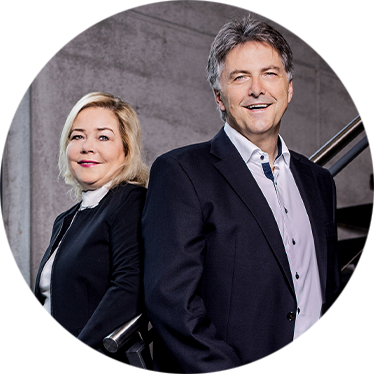EXTERNAL LINK
You are about to leave Pajunk.com. This link is provided strictly for information sharing purposes.
Pajunk GmbH assumes no responsibility for the quality, content, nature, or reliability of any linked site.

The U.S. Department of Health and Human Services (HHS) defines opioids as “a class of drugs that include the illegal drug heroin, synthetic opioids such as fentanyl, and pain relievers available legally by prescription, such as oxycodone (OxyContin®), hydrocodone (Vicodin®), codeine, morphine, and many others.”
Opioid abuse can have tragic consequences. According to HHS, “Fentanyl and similar compounds… are powerful synthetic opioids -- 50 to 100 times more potent than morphine. High doses of opioids, especially potent opioids such as fentanyl, can cause breathing to stop completely, which can lead to death.”1
In 2019, 50,000 people died due to an opioid overdose in the U.S. (this figure includes prescription pain relievers, heroin, and synthetic opioids). The dramatic number of deaths increased by nearly 5% from 2018 to 2019. Additionally, it was reported that more than 10 million people ages 12 and older in the U.S. misused opioids in the year 2019.
In addition to the lives lost and tragedies experienced by friends and families affected by opioid-related abuse or deaths, the Centers for Disease Control and Prevention highlights the economic burden the crisis is putting on the country, estimating the misuse of prescription opioids costs approximately $78.5 billion a year.2
In the late 1990’s, pharmaceutical companies in the U.S. began advertising prescription opioid pain relievers as medication patients could use without becoming addicted. In turn, healthcare providers prescribed more and more opioids to patients as a temporary or ongoing pain management treatment. The unfortunate reality is that opioids have proven addictive, and the result from the overprescribing has been rising overdose rates and an increasing number of deaths each year.3
The most prescribed opioids are used to block pain signals for acute pain like toothaches, injuries or after surgeries or traumatic injury.4 However, chronic pain is the most common reason for prescribing opioids like oxycodone or morphine.5
To address and attempt to improve the current state of the opioid crisis, the U.S. Department of Health and Human Services (HHS) is working to raise awareness with respect to the possible side effects of opiates. To achieve this, the HHS focuses on five major priorities:
Pajunk is one of the major players in acute pain/regional anaesthesia and is extending its offerings into the area of chronic pain. Thus, Pajunk can play an important role in addressing the opioid crisis by offering an alternative treatment for both pain types that are entirely devoid of opioids.
Pajunk offers different options to help patients with non-opioid alternatives, including:
In the area of acute pain, Pajunk is offering the widest range of stimulating and echogenic products for single shot and continuous nerve block procedures.
For single injections, Pajunk has been the pioneer in ultrasound-guided nerve blocks. The NanoLine® coating technology (2004) and the Cornerstone Reflectors (2009) set the basis for the introduction of the first ultrasound optimized nerve block needle in 2009 – the SonoPlex.
The E-Cath/E-Cath Plus, is a continuous nerve block solution and utilizes the benefits of the Catheter-Over-Needle technique, which significantly simplifies the procedure and reduces the chance of anaesthetic leakage and catheter dislocation or migration.
If you are interested in further details, please refer to our product page.
In addition to acute pain solution, Pajunk has been developing products in the field of chronic pain.
Injections are a nonsurgical treatment option, similar to nerve blocks; they are commonly used to treat persisting pain after other non-surgical measures such as medications and/or physical therapy have been tried to no avail. Before surgery is considered, injections are used to both provide pain relief and help determine the source of a patient’s pain.
For pain relief injections, Pajunk offers a sharp and stable echogenic needle, the SonoMSK.
If you are interested in further details, please refer to our product page.
Pajunk is continuing to focus on innovative solutions to treat chronic pain because the need for opioid-free alternatives is urgently needed. Patients need to live pain-free and to reclaim their quality of life without the risk of cognitive impairment or other adverse side effects often associated with opioids. Ultimately, Pajunk hopes its ever-growing regional anesthesia and pain management portfolios will contribute to decreasing life-threatening opioid abuse and overdoses.
1 https://www.hhs.gov/opioids/prevention/index.html
2 https://www.hhs.gov/opioids/
3 https://www.drugabuse.gov/drug-topics/opioids/opioid-overdose-crisis
4 https://familydoctor.org/condition/opioid-addiction/
5 https://www.ncbi.nlm.nih.gov/pmc/articles/PMC2711509/
6 https://www.drugabuse.gov/drug-topics/opioids/opioid-overdose-crisis
